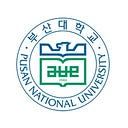Pusan National University Academic Explores the Nuances of Speaking in a Second Language
A new study reveals how social factors and stylistic alignment influence conversation including second language speakers
Stylistic alignment is the nonconscious verbal coordination that occurs when two people subtly match each other’s speaking or writing style during respective interactions. Recent research discovered that it occurs to a greater extent between second language speakers than between a second language and a native speaker. Additionally, non-linguistic factors like familiarity and proficiency differences between conversation partners play significant roles in determining how much they adapted to each other’s speaking style during the communication.
Psycholinguistic research, which examines the cognitive mechanisms underlying human language use, has exploded in recent decades. While it was originally believed that social perceptions may not affect the degree of linguistic alignment — the tendency of a speaker’s language use to align with specific language features of their conversation partner in a dialogue, there is now a growing interest in examining how social factors such as people’s attitudes and beliefs as well as cognitive factors might affect linguistic alignment.
However, there is scant research devoted to investigating linguistic alignment in natural conversation including a second language (L2) speaker and the role of non-linguistic factors in the amount of linguistic alignment. Addressing these research gaps , Associate Professor YeonJoo Jung from Pusan National University, Korea and Professor Scott Crossley from Georgia State University, USA have recently studied how speakers’ alignment behaviors differed in natural dialogues between L2–L1 (native language) and L2–L2 pairs in terms of stylistic alignment — the nonconscious verbal coordination that occurs when two people subtly match each other’s speaking or writing style in the course of a spoken or a written conversation, respectively. The researchers also explored the extent to which non-linguistic variables such as group membership and familiarity between interlocutors influence the degree of stylistic alignment in a natural conversation between L2 speakers and between an L2 speaker and a native speaker. Their findings were made available online on 21 December 2022 and published in the journal Applied Linguistics Review.
The researchers computationally analyzed a spoken corpus of 360 texts in which the L1 speakers were all native English speakers, while the native tongue of L2 learners encompassed a wide range of languages, including Arabic, Japanese, and Korean among others.
The authors found that stylistic alignment occurred to a greater extent in the L2–L2 dyad than in the L2–L1 dyad. L2 learners tended to produce more standardized words in terms of trigram proportion, word range, and semantic diversity, but used more sophisticated words with respect to imageability (how easily a word evokes a mental image in the speaker’s mind). Thus, L2–L1 interactions followed the expected patterns of language while showing a trend towards more sophisticated language. In contrast, L2–L2 interactions veered away from expected language distributions and produced less sophisticated language, leading to greater comprehension.
The differences in stylistic alignment between the two groups may be due to several reasons. “The speakers may observe their partner’s level of understanding during the conversation and act accordingly,” points out Dr. Jung.
The differences among the groups may also be related to different levels of attentional resources required for the two types of interactions. “For example, when conversing with an L1 interlocutor, L2 speakers may assume that the L1 speaker has complete knowledge of the language and is therefore able to understand all acceptable language use. Whereas, when addressing an L2 interlocutor, L2 speakers may need to monitor their language to a greater degree, owing to the interlocutor’s incomplete knowledge of the target language, to make sure that the L2 interlocutor understands the messages correctly,” elaborates Dr. Jung.
Furthermore, the researchers found that non-linguistic factors also played a significant role in how much speakers stylistically aligned in their language use. Specifically, group membership, familiarity, and proficiency differences between conversation partners were significant predictors of the degree of stylistic alignment in relation to word range, trigram proportion, semantic diversity, and word imageability indices.
In conclusion, this study paves the way to an enhanced understanding of stylistic alignment, especially for conversations involving L2 speakers.
Reference
Title of original paper: Stylistic alignment in natural conversation involving second language speakers
Journal: Applied Linguistics Review
DOI: https://doi.org/10.1515/applirev-2020-0048
Corresponding author’s email: yjjung@pnu.edu
About the Institute
Pusan National University, located in Busan, South Korea, was founded in 1946, and is now the no. 1 national university of South Korea in research and educational competency. The multi-campus university also has other smaller campuses in Yangsan, Miryang, and Ami. The university prides itself on the principles of truth, freedom, and service, and has approximately 30,000 students, 1200 professors, and 750 faculty members. The university is composed of 14 colleges (schools) and one independent division, with 103 departments in all.
Website: https://www.pusan.ac.kr/eng/Main.do
About the author
YeonJoo Jung is an Associate Professor of English Education at Pusan National University (PNU), Korea. She completed her MA in Second Language Studies from Indiana University Bloomington in 2013 and received a PhD in Applied Linguistics from Georgia State University in 2018. She joined PNU in March 2019. Her research interests include Second Language Acquisition, Task-Based Language Teaching (TBLT), educational technology for second language teaching and learning, and computational analysis of spoken and written data produced by L2 speakers. She is primarily interested in integrating technology in L2 learning within the domain of TBLT.
ORCID ID: 0000–0001–8980–6219
